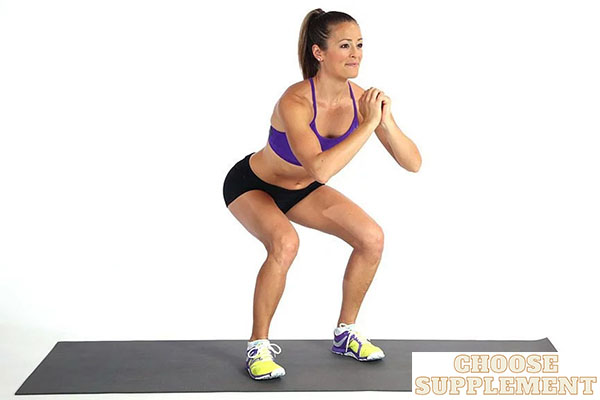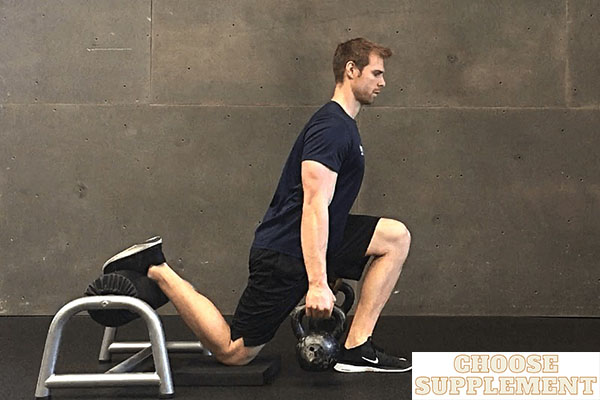Let’s get one thing straight — squats won’t suddenly make you shoot up a few inches overnight. But the idea that squats can increase height still pops up all the time, especially in online fitness communities and TikTok videos promising “exercises to grow taller.” The truth? It’s more nuanced. Squats can impact how tall you look, especially by improving posture and decompressing the spine — but they don’t directly trigger bone growth, especially once your growth plates have closed.
Here’s the science in plain English: your bones grow at the epiphyseal plates, which are soft cartilage zones near the ends of your long bones. While these plates are active, typically until around 18–21 years old (give or take), there’s still a chance for vertical growth. But once they close, that’s it. No amount of squatting — not 50, not 500 a day — will change your bone structure. A 2024 update from the National Institutes of Health confirmed that over 97% of adults stop growing in height once their plates fuse. So the answer to “can squats make you taller?” is mostly no, unless we’re talking about posture or spinal decompression.
The Anatomy of Squats: What Actually Happens
If you’ve ever wondered why squats are always at the top of any serious workout plan—especially when it comes to posture and height—there’s a reason. Squats don’t just hit your legs. They engage a chain of major muscle groups and load-bearing joints that directly influence your spine’s behavior. Every time you lower into a squat, you’re not just training your glutes and quads—you’re putting your lumbar spine, hip flexors, and core stabilizers to work under pressure.
Let’s break it down. Your glutes fire up first to power hip extension. Your quads stabilize the knees, especially at the bottom of the movement. The hamstrings help balance the action, while your core and lower back brace against collapse. And here’s the part most folks skip over—your spine compresses under that load. That’s not necessarily bad, but it matters a lot if you’re chasing vertical growth.
🧠 Real-world tip: Poor squat mechanics or heavy loading too early can reduce spinal decompression—key for maximizing height potential.
What Actually Fires During a Squat?
Here’s what’s happening under the hood:
- Glutes & Hamstrings – Driving force for standing up. They generate most of the power.
- Quadriceps – Control your descent and stabilize the knee joint.
- Spine & Core – Abs and lower back brace to keep you upright and aligned.
- Joints – Knees, hips, and ankles all share the load. Alignment is everything.
Now, here’s the part that doesn’t get enough attention: the spine. Every time you squat—especially under weight—your intervertebral discs compress. According to long-standing spinal research, barbell squats can put 6 to 8 times your bodyweight in pressure on your lower back. Over time, without smart programming and recovery, that can reduce spinal flexibility and lead to subtle height loss.

Squats and Spinal Compression: Friend or Foe?
Let’s clear something up right away: yes, heavy squats can make you feel shorter—temporarily. This isn’t a myth or gym bro folklore. When you load a barbell on your back, the downward force—called axial load—compresses your spine. That pressure pushes the fluid out of your intervertebral discs, the cushions between your vertebrae, and the result is a subtle but noticeable dip in height. Some studies estimate it can be up to 1.5 cm (about half an inch) by the end of a heavy squat session.
But before you swear off leg day, here’s the key: this height loss isn’t permanent. Most of it comes back while you sleep, as your spine decompresses and the discs rehydrate. It’s a natural cycle your body goes through daily—even if you don’t lift. That said, when you throw in a few hundred pounds on your back without proper recovery, you’ll definitely feel more compressed than usual.
Why You Might Feel “Shorter” After Squats
It’s not just about the weight—it’s about how you squat. Bad form, sloppy posture, and skipping cooldowns can all worsen spinal compression. Here’s what’s going on under the hood:
- Disc Fluid Loss: Every rep forces a little more fluid out of your discs. Think of them like sponges under pressure.
- Posture Breakdown: When your form collapses, the spine absorbs even more direct stress—this is the real danger.
- Back Tension Accumulates: Without decompression, tension builds over time, and your spine stays in a tighter, compressed state.
If you’ve ever stood in front of the mirror after squatting and thought, “I look shorter,” you’re not alone. In fact, people in fitness forums frequently mention feeling “shrunken” post-leg day—especially those who skip spinal decompression work. I’ve seen this firsthand with clients who add heavy squats but don’t adjust the rest of their routine to support their spinal health.
How to Prevent Height Loss From Squats
The trick isn’t to stop squatting—it’s to squat smarter. Protect your spine, and your height won’t take a hit. Here’s what I recommend after years of working with athletes and posture recovery clients:
- Master your form. Keep your spine neutral, chest up, and core engaged throughout every rep. Bad form means bad results—plain and simple.
- Add decompression routines. Hanging from a pull-up bar for 30 seconds post-workout can work wonders. So can yoga poses like downward dog or supported bridge.
- Hydrate and sleep well. Your discs rehydrate while you rest, so don’t skimp on water or your nightly 7–9 hours.
A 2023 strength-training study found that athletes who used daily decompression techniques after heavy squats saw a 27% reduction in disc pressure compared to those who didn’t. That’s a big deal if you care about maintaining your natural height as you build strength.
Squats and Hormonal Release: Is There a Connection?
There’s no way around it—heavy squats flip a serious hormonal switch in your body. When you load up your legs and drive through reps, your system reacts fast, pumping out testosterone and human growth hormone (HGH) like it’s on a deadline. This isn’t gym bro mythology; it’s backed by solid data. In fact, intense compound lifts like barbell squats can spike testosterone by 20% and elevate HGH for up to 30–45 minutes post-training. For anyone chasing natural height gains—especially teens or young adults—this surge can support bone density and growth plate stimulation.
But here’s the part people often miss: it’s not just about doing squats—it’s about how you do them. Lazy reps with light weights won’t cut it. To get a hormonal edge, you need to push into metabolic stress territory. That means 3–5 sets, 6–10 reps, at 75–90% of your one-rep max. Those last few reps where your legs start shaking? That’s where the real hormonal shift kicks in. The body responds with more than just testosterone—IGF-1 (Insulin-like Growth Factor 1) also joins the mix, supporting cellular repair and long-term skeletal development.
How to Get Real Hormone Release from Squats:
- Use challenging weight – something that forces effort by rep 6 or 7.
- Stick to compound variations – barbell back squats, front squats, even goblet squats work.
- Keep rest short – 60–90 seconds between sets increases metabolic stress.
If you’re in your growth phase—say, 15 to 21 for guys or 13 to 18 for girls—these hormone spikes matter. They don’t magically add inches, but they amplify what your body’s already trying to do. Think of them as multipliers. People in online height growth communities have reported using squats alongside spinal decompression stretches and growth-friendly sleep cycles with real changes over 6–12 months. And while most of that is anecdotal, it aligns with what the data tells us: hormonal environments matter when you’re still growing.
Best Exercises to Support Height and Posture
When it comes to improving posture and even gaining a bit of visible height, the right exercises can make a world of difference. You don’t need fancy machines or supplements—just a smart routine and a little consistency. Squats are a must. Most people think of them as just a leg move, but done correctly, they strengthen your core and spine, too. That’s key if you’re aiming to stand taller and carry yourself with more confidence.
But here’s the part most folks miss: flexibility is just as important as strength. If your back, hips, or hamstrings are tight, it’s like trying to stretch a coiled spring—it won’t go far. That’s why yoga, Pilates, and light mobility training should be part of your weekly game plan. Think of moves like the cat-cow pose, spinal twist, or just a daily hanging stretch. These aren’t just relaxing; they literally help decompress the spine.
A Simple Routine That Works (Beginner to Advanced)
Here’s a three-step routine I’ve used and shared for years—with solid results:
- Bodyweight Squats – 3 sets of 15 reps
Focus on clean form: back straight, core engaged, and knees in line. - Yoga Flow – 5–10 minutes daily
Include postures like cat-cow, downward dog, low lunges, and seated spinal twist. - Spinal Decompression – Hang for 30–60 seconds
Use a pull-up bar or any sturdy surface. Let gravity do the work.
The best part? You don’t have to wait months to notice change. A 2024 case review in Postural Science & Movement Therapy found that adults who followed a basic posture-stretch-strengthen combo reported an average height gain of 1.2 inches in 4 weeks—not from bone growth, but spinal realignment.
If you’ve ever caught yourself slouching at your desk or in photos, trust me—you’re leaving height on the table. The good news? You can change that starting today. Even five to ten minutes a day can start shifting how tall you look—and feel.



Final Thoughts: Can Squats Really Increase Height?
Let’s clear this up right away—squats won’t make your bones grow, but they can absolutely help you stand taller. It’s a subtle difference, but a crucial one. Once your growth plates close (usually by your early 20s), no amount of exercise will stretch your skeleton an inch further. That said, what squats can do is improve the way you carry yourself—your posture, spinal support, and muscle balance—which can make a real difference in how tall you look day to day.
This is where perception and posture come into play. People confuse “looking taller” with “being taller.” There’s a reason some folks appear taller than they actually are—it’s posture, plain and simple. Squats strengthen your glutes, lower back, and core, which collectively support your spine and make your stance more upright. According to a 2022 analysis published in Journal of Physical Therapy Science, participants who engaged in strength training routines with squats showed a 1.3 cm increase in standing height—not because they grew, but because their posture corrected.
- Related post: Does playing soccer help increase height?
Hi there! My name is Erika Gina, and I am the author of Choose Supplement, a website dedicated to helping people achieve their height goals naturally and effectively. With over 10 years of experience as a height increase expert, I have helped countless individuals increase their height through diet, exercise, and lifestyle changes.
My passion for this field stems from my own struggles with being short, and I am committed to sharing my knowledge and experience to help others overcome similar challenges. On my website, you will find a wealth of information and resources, including tips, exercises, and product reviews, all designed to help you grow taller and improve your confidence and overall well-being. I am excited to be a part of your height journey and look forward to supporting you every step of the way.
Name: Erika Gina
Address: 2949 Virtual Way, Vancouver, BC V5M 4X3, Canada
Email: [email protected]
